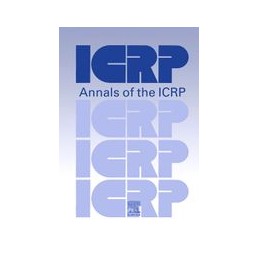- Reduced price

Order to parcel locker

easy pay


 Delivery policy
Delivery policy
Choose Paczkomat Inpost, Orlen Paczka, DHL, DPD or Poczta Polska. Click for more details
 Security policy
Security policy
Pay with a quick bank transfer, payment card or cash on delivery. Click for more details
 Return policy
Return policy
If you are a consumer, you can return the goods within 14 days. Click for more details
In Publication 103 (ICRP, 2007), the Commission included a section on the protection of the environment, and indicated that it would be further developing its approach to this difficult subject by way of a set of Reference Animals and Plants (RAPs) as the basis for relating exposure to dose, and dose to radiation effects, for different types of animals and plants. Subsequently, a set of 12 RAPs has been described in some detail (ICRP, 2008), particularly with regard to estimation of the doses received by them, at a whole-body level, in relation to internal and external radionuclide concentrations; and what is known about the effects of radiation on such types of animals and plants. A set of dose conversion factors for all of the RAPs has been derived, and the resultant dose rates can be compared with evaluations of the effects of dose rates using derived consideration reference levels (DCRLs). Each DCRL constitutes a band of dose rates for each RAP within which there is likely to be some chance of the occurrence of deleterious effects. Site-specific data on Representative Organisms (i.e. organisms of specific interest for an assessment) can then be compared with such values and used as a basis for decision making.
It is intended that the Commissions approach to protection of the environment be applied to all exposure situations. In some situations, the relevant radionuclide concentrations can be measured directly, but this is not always possible or feasible. In such cases, modelling techniques are used to estimate the radionuclide concentrations. This report is an initial step in addressing the needs of such modelling techniques.
After briefly reviewing the basic factors relating to the accumulation of radionuclides by different types of biota, in different habitats, and at different stages in the life cycle, this report focuses on the approaches used to model the transfer of radionuclides through the environment. It concludes that equilibrium concentration ratios (CRs) are most commonly used to model such transfers, and that they currently offer the most comprehensive data coverage. The report also reviews the methods used to derive CRs, and describes a means of summarising statistical information from empirical data sets. Emphasis has been placed on using data from field studies, although some data from laboratory experiments have been included for some RAPs.
Data sheet
PREFACE
Executive Summary
Glossary
1. INTRODUCTION
2. OVERVIEW OF APPROACHES USED TO MODEL TRANSFER OF RADIONUCLIDES IN THE ENVIRONMENT
3. DERIVATION OF CONCENTRATION RATIOS (CRS) FOR REFERENCE ANIMALS AND PLANTS
4. CONCENTRATION RATIOS FOR REFERENCE ANIMALS AND PLANTS
ANNEX A: DETAILED STATISTICAL INFORMATION ON CONCENTRATION RATIOS FOR REFERENCE ANIMALS AND PLANTS
ANNEX B: DERIVED CONCENTRATION RATIOS
ANNEX C
1. INTERNAL BODY DISTRIBUTIONS OF SELECTED ELEMENTS IN THE REFERENCE ANIMAL AND PLAN FLATFISH : DATA FOR THE EUROPEAN PLAICE : PLEURONECTES PLATESSA L.
2 ACCUMULATION OF SOME RADIONUCLIDES BY EGGS OF THE EUROPEAN PLAICE : PLEURONECTES PLATESSA L.
3 SOME BIOLOGICAL HALF-TIMES FOR THE EUROPEAN PLAICE : PLEURONECTES PLATESSA L.
